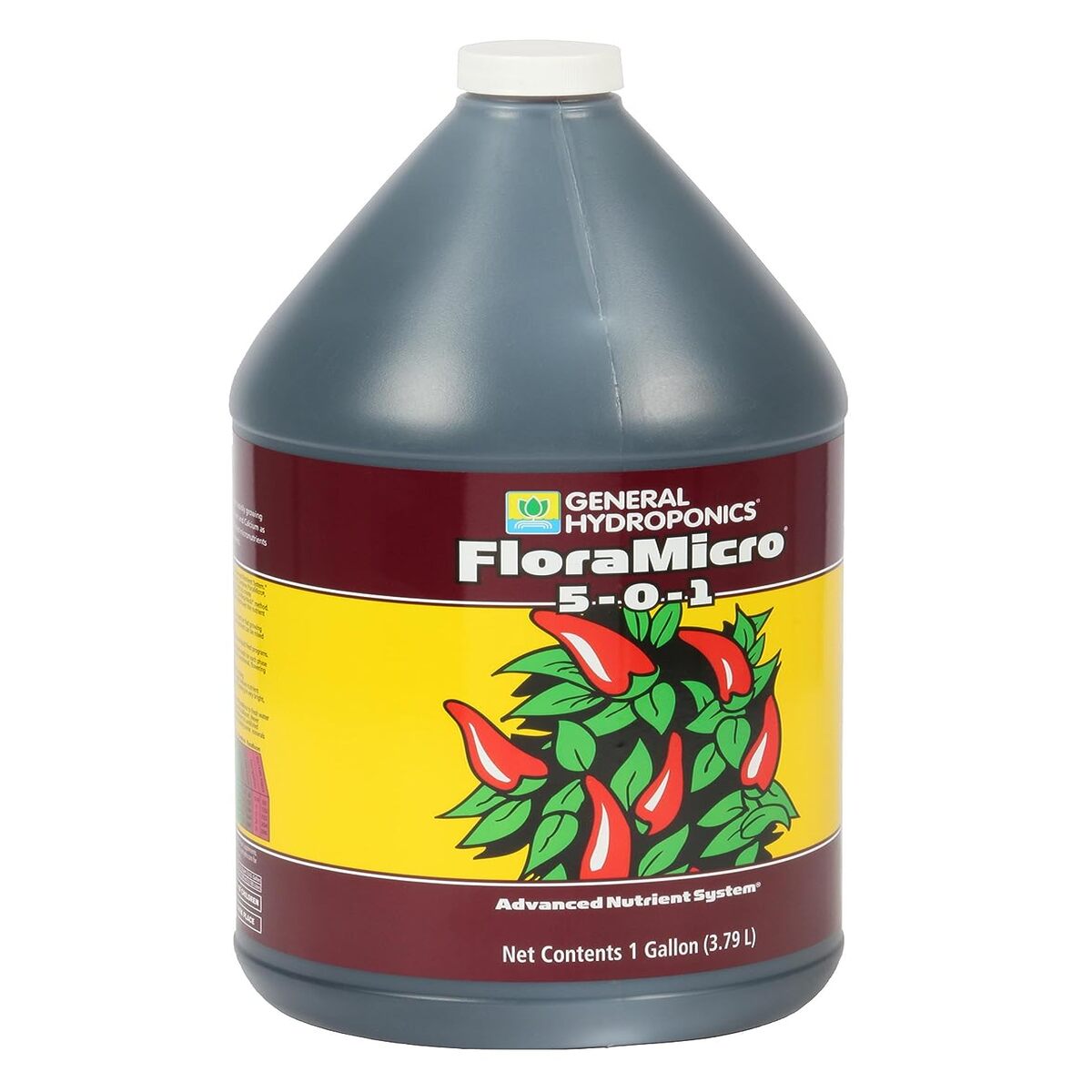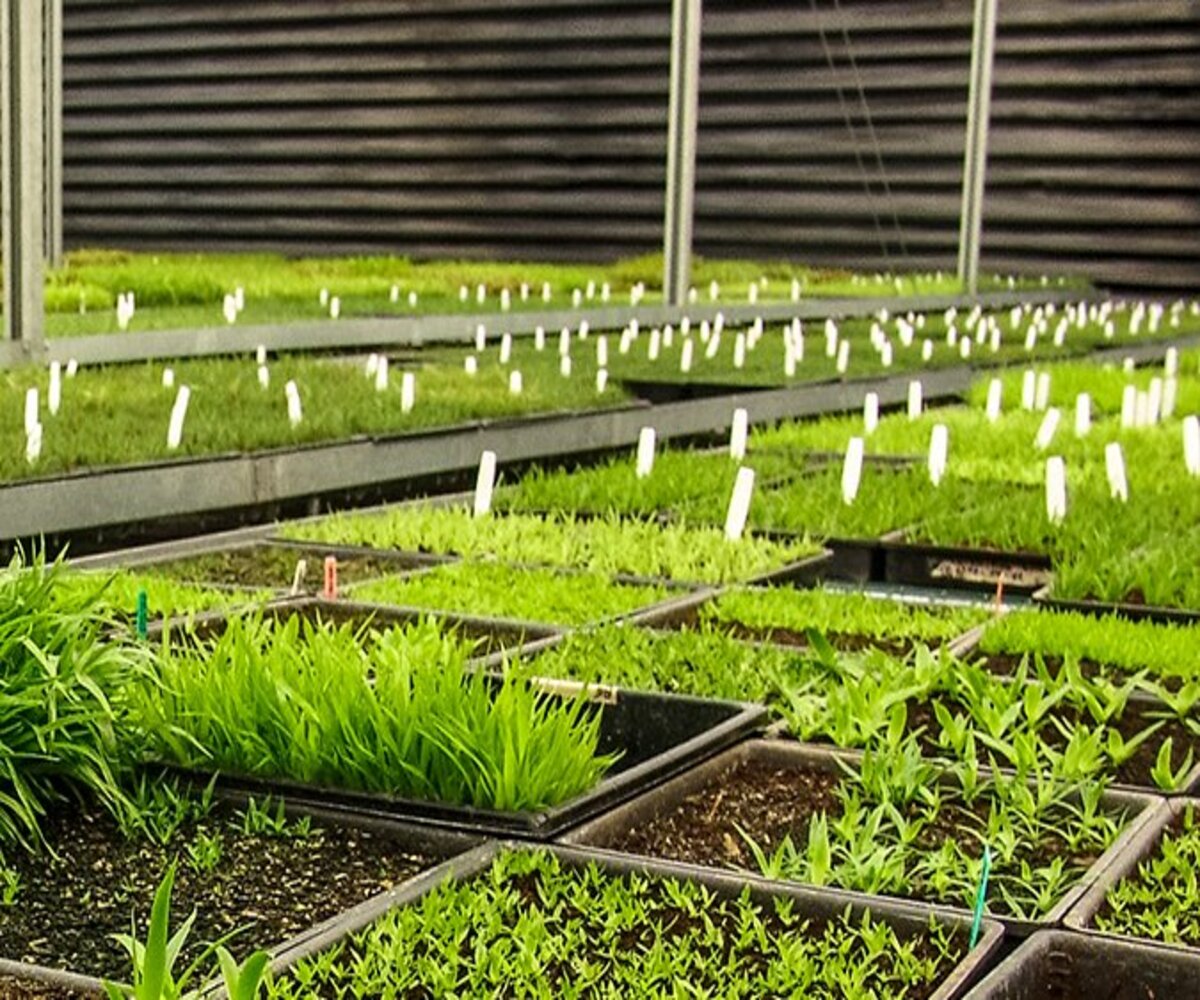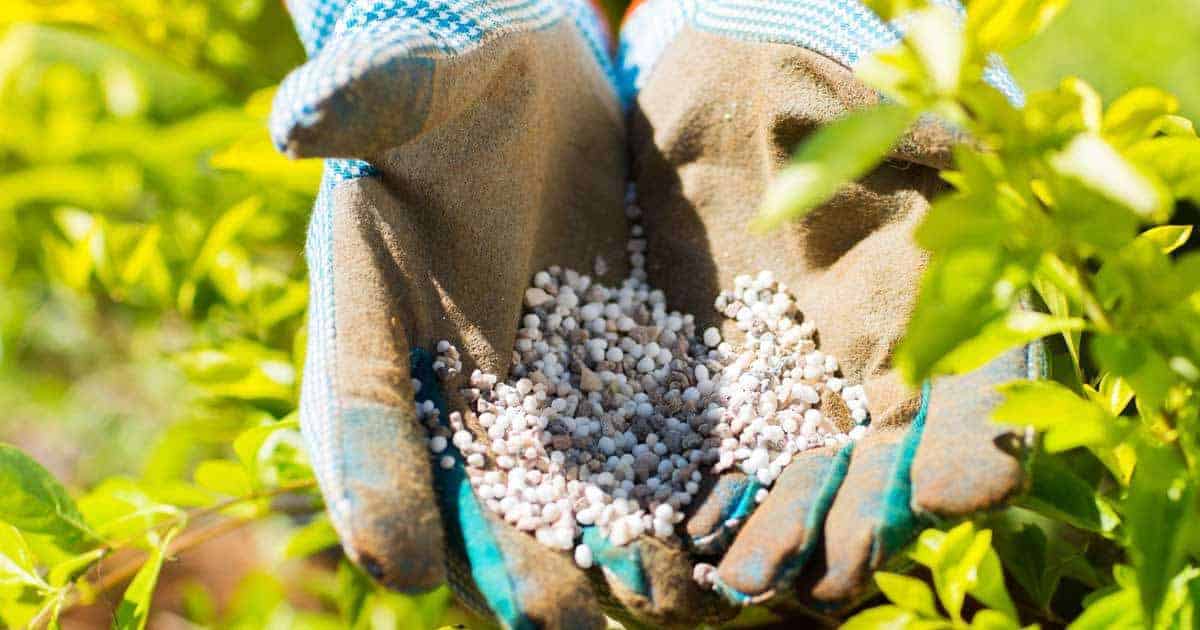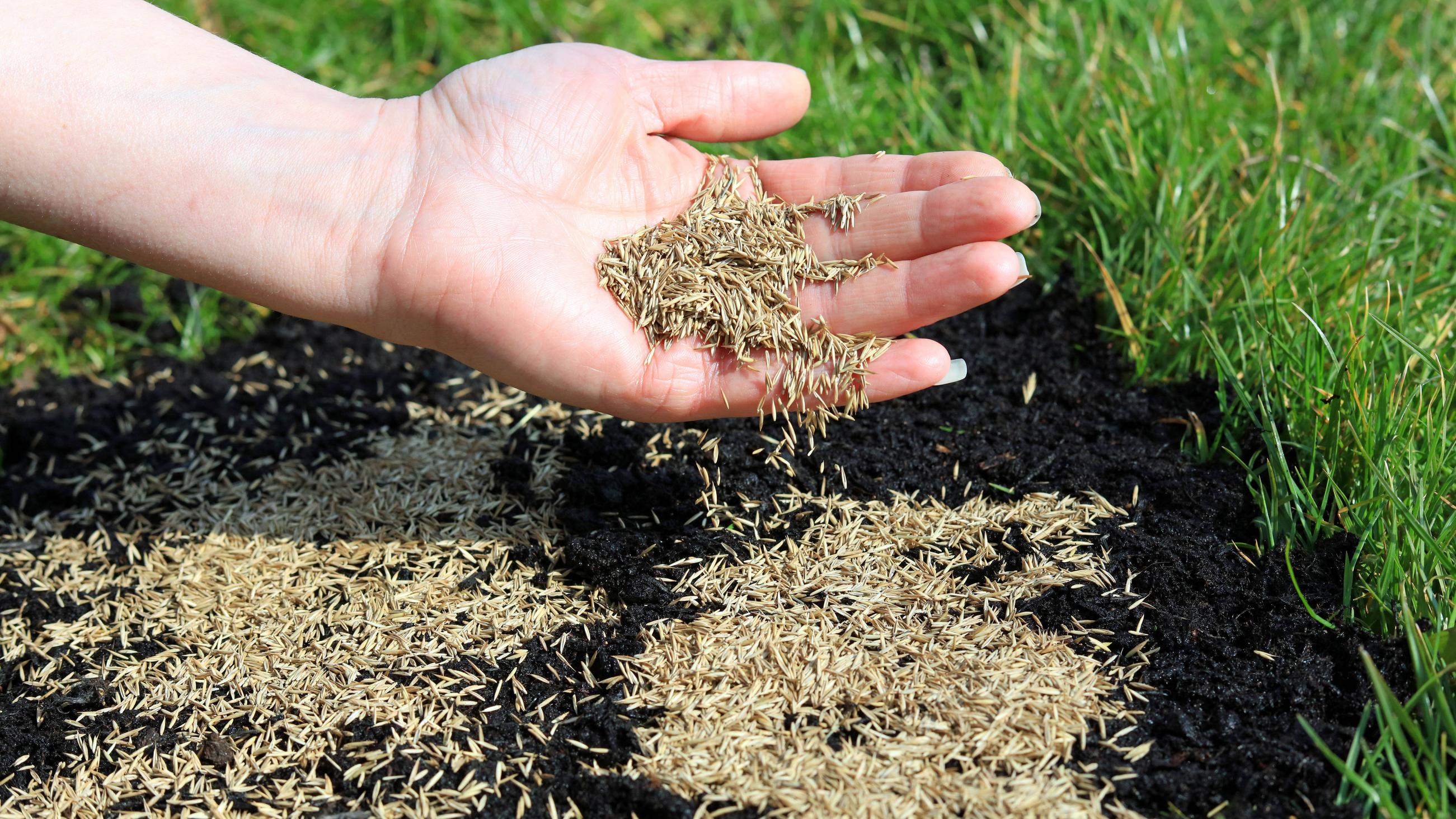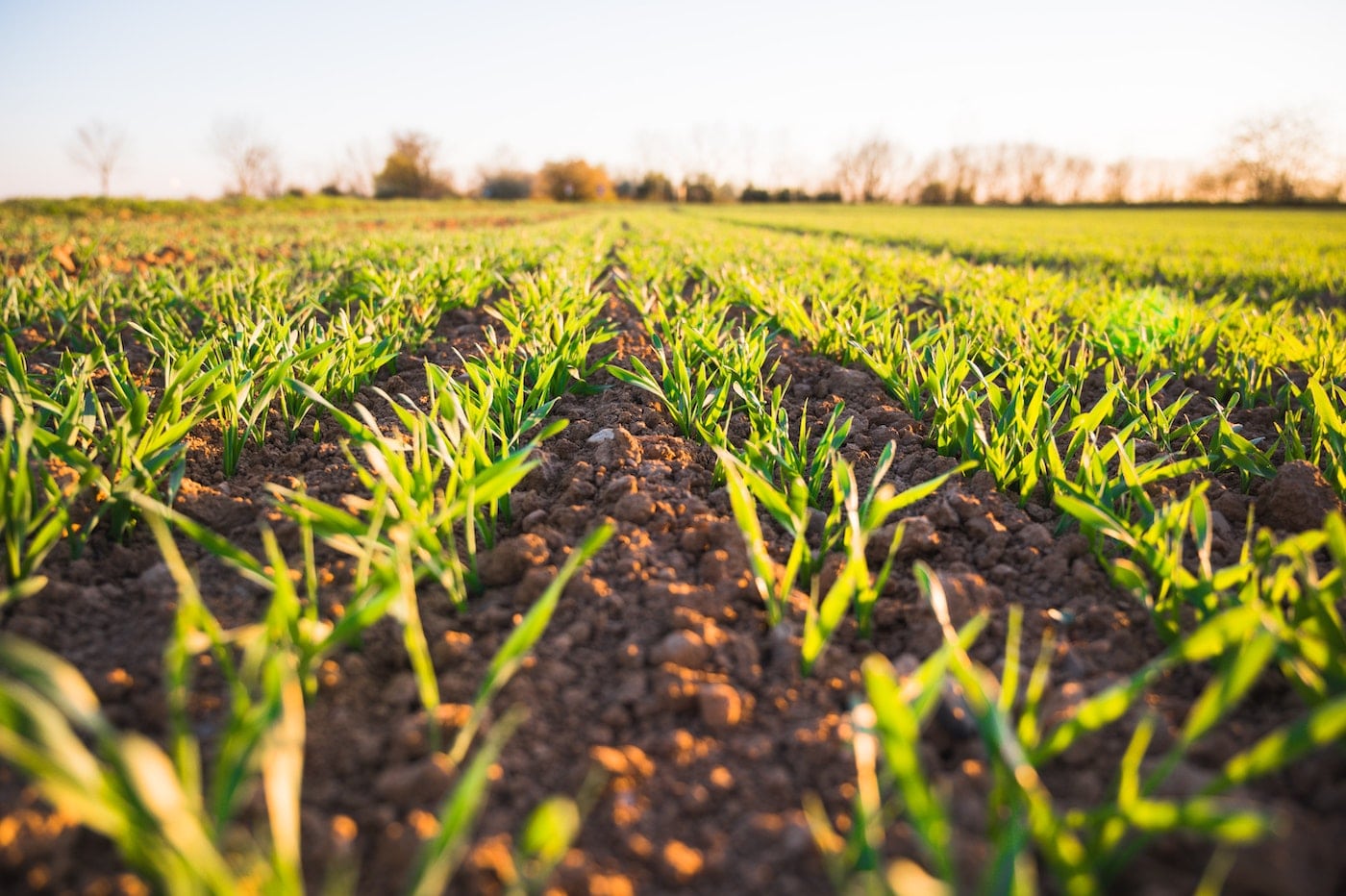Home>Gardening News and Trends>What Fertilizer To Use After Aeration
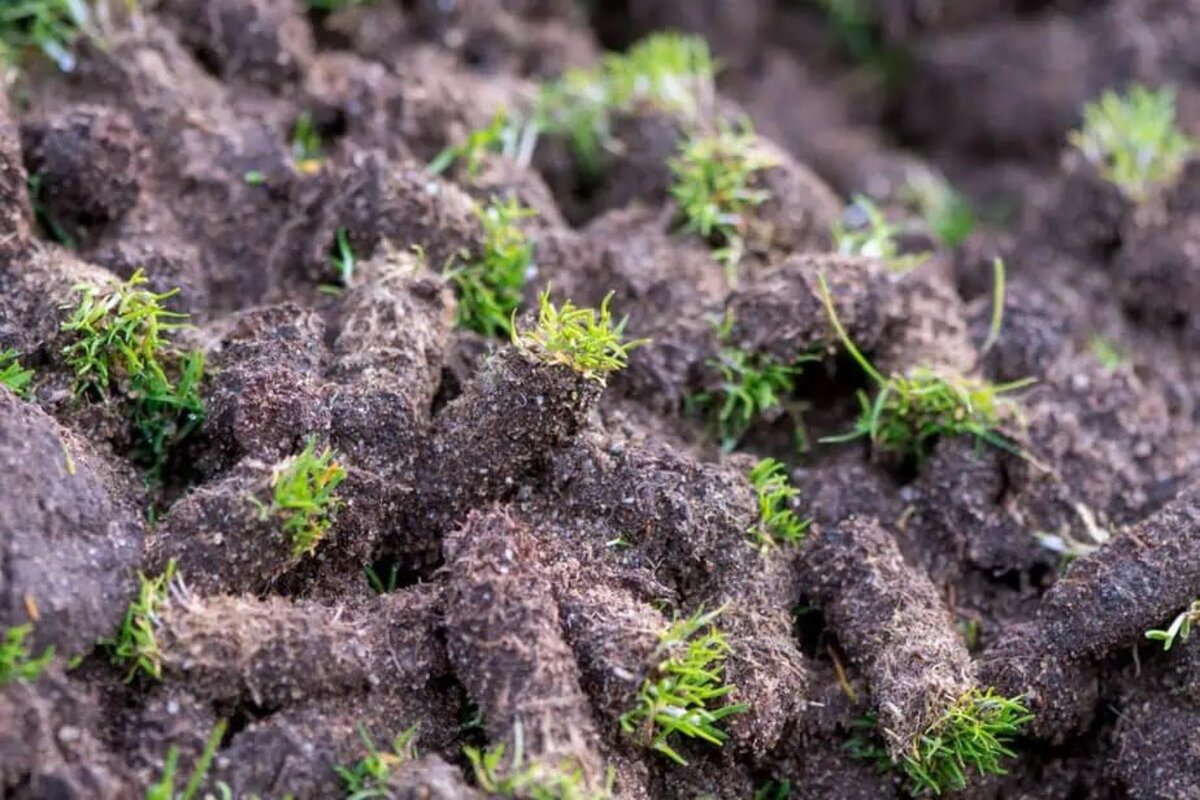

Gardening News and Trends
What Fertilizer To Use After Aeration
Modified: January 22, 2024
Discover the latest news on which fertilizer to use after aeration. Find out the best options for maximizing lawn health and nutrient absorption.
(Many of the links in this article redirect to a specific reviewed product. Your purchase of these products through affiliate links helps to generate commission for Chicagolandgardening.com, at no extra cost. Learn more)
Table of Contents
- Introduction
- Benefits of Aeration
- Understanding the Aeration Process
- Importance of Fertilizing After Aeration
- Factors to Consider When Choosing Fertilizer
- Types of Fertilizer to Use After Aeration
- Organic Fertilizers
- Synthetic Fertilizers
- Slow-Release Fertilizers
- Tips for Proper Fertilizer Application After Aeration
- Conclusion
Introduction
When it comes to maintaining a lush and healthy lawn, aeration and fertilization are two essential practices that go hand in hand. Aeration involves perforating the soil with small holes to improve air, water, and nutrient penetration, while fertilization ensures that the grass receives the necessary nutrients to thrive.
Proper aeration and fertilization can have a significant impact on the overall health and vitality of your lawn. By understanding the importance of fertilizing after aeration and choosing the right type of fertilizer, you can maximize the benefits and keep your lawn looking its best.
In this article, we’ll delve into the benefits of aeration, the aeration process, and why fertilization is crucial afterward. We’ll also explore the factors to consider when choosing a fertilizer and the different types available. Finally, we’ll provide tips for the proper application of fertilizer after aeration. So, let’s get started on the journey to a more beautiful and resilient lawn!
Benefits of Aeration
Aeration is a vital process that can have numerous benefits for your lawn. Let’s take a closer look at some of the key advantages:
- Improved Soil Compaction: Over time, the soil in your lawn can become compacted, restricting root growth and limiting the absorption of water, air, and nutrients. Aeration helps alleviate soil compaction by creating spaces for the roots to breathe and access essential resources.
- Enhanced Oxygen Exchange: By creating small holes in the soil, aeration promotes better oxygen exchange between the roots and the surrounding environment. Adequate oxygen levels are essential for root development and overall plant health.
- Increased Nutrient Absorption: When the soil is compacted, it becomes more difficult for nutrients to penetrate into the root zone. Aeration allows for better nutrient absorption, ensuring that your grass receives the essential elements it needs to thrive.
- Better Water Infiltration: Compacted soil can also impede water penetration, leading to surface runoff and wasted irrigation. Aeration facilitates proper water infiltration, reducing water wastage and allowing the roots to access the moisture they require.
- Thatch Reduction: Thatch, a layer of dead grass and organic debris that accumulates on the surface, can hinder nutrient absorption and promote disease and pest infestations. Aeration helps break down thatch by stimulating microbial activity and speeding up decomposition.
By addressing these issues, aeration sets the stage for a healthier lawn with improved resistance to stress, disease, and environmental pressures. It creates an optimal environment for root development and allows your grass to reach its full potential.
Understanding the Aeration Process
Aeration is more than just poking holes in the ground; it involves a systematic process to effectively improve soil conditions. Let’s break down the key steps involved in the aeration process:
- Evaluating Lawn Conditions: Before starting the aeration process, it’s important to assess your lawn’s needs. Factors such as soil compaction, thatch thickness, and grass type can all influence the aeration schedule and techniques used.
- Selecting the Right Equipment: Aeration can be done using either a spike aerator or a plug aerator. Spike aerators create holes by piercing the soil, while plug aerators remove small cores of soil. Plug aerators are generally more effective in relieving soil compaction and promoting healthier root growth.
- Mowing and Watering: Prior to aeration, it’s recommended to mow your lawn to a shorter length than usual. This allows the aerator to penetrate the soil more effectively. Additionally, it’s essential to water your lawn thoroughly a day or two before aeration. Moist soil will be easier to aerate and help achieve better results.
- Aerating in a Crisscross Pattern: To ensure thorough aeration, it’s best to go over your lawn in two directions, creating a crisscross pattern. This helps to cover the entire area and provide more uniform penetration. Pay extra attention to high-traffic areas and compacted spots.
- Removing Lawn Debris: Once the aeration is complete, you may notice small soil cores scattered across the lawn’s surface. It’s essential to remove these cores by raking or mowing over them. This will prevent them from interfering with the grass and also help with thatch breakdown.
By understanding and following these steps, you can ensure that the aeration process is carried out effectively, leading to improved soil structure and setting the stage for a successful fertilization to follow.
Importance of Fertilizing After Aeration
After the aeration process, fertilizing your lawn is essential to optimize its health and appearance. Here are a few reasons why fertilization after aeration is of utmost importance:
- Enhanced Nutrient Uptake: Aeration creates channels for better nutrient absorption, allowing the grass roots to take in the essential nutrients more efficiently. By applying fertilizer after aeration, you provide the necessary nutrients directly to the root zone, ensuring that your grass has access to the fuel it needs to grow and thrive.
- Promotion of Root Development: Fertilization after aeration promotes vigorous root growth. As the grass roots expand into the newly aerated soil, they are met with the nutrients provided by the fertilizer. This encourages deeper and stronger root systems, which, in turn, leads to a more resilient and healthier lawn.
- Accelerated Recovery: Aeration can temporarily stress the grass as it disrupts the soil structure. By fertilizing after aeration, you help accelerate the lawn’s recovery process. The nutrients in the fertilizer aid in repairing any damage caused during the aeration process and support the regrowth of the turf, making it bounce back quicker and more robustly.
- Improved Overall Lawn Appearance: Fertilizing after aeration can significantly enhance the visual appeal of your lawn. The nutrients provided by the fertilizer promote lush, green growth and contribute to a thicker turf. Regular fertilization after aeration can lead to a beautiful, vibrant lawn that is the envy of the neighborhood.
- Long-Term Soil Health: Fertilizing after aeration contributes to the long-term health of your soil. Regular applications of fertilizer can help improve the soil structure, enhance microbial activity, and increase organic matter content. This leads to healthier, more nutrient-rich soil, creating a sustainable environment for your lawn to thrive in.
By recognizing the importance of fertilizing after aeration, you can maximize the benefits of both practices and provide your lawn with the best possible care it deserves.
Factors to Consider When Choosing Fertilizer
Choosing the right fertilizer after aeration is crucial for providing your lawn with the necessary nutrients it needs to flourish. Consider the following factors when selecting a fertilizer:
- Nutrient Composition: Fertilizers typically contain three primary nutrients: nitrogen (N), phosphorus (P), and potassium (K). The nutrient composition will be displayed on the fertilizer packaging as the NPK ratio (e.g., 10-10-10 or 20-10-5). Different grass types and soil conditions may require varying nutrient ratios, so it’s important to know the specific needs of your lawn.
- Release Rate: Fertilizers can be classified as quick-release or slow-release, depending on how soon and how long the nutrients are available to the grass. Quick-release fertilizers provide an immediate nutrient boost but may require frequent reapplication. Slow-release fertilizers release nutrients gradually over time, resulting in steady and sustained feeding of the lawn.
- Grass Type: Different grass species have distinct nutrient requirements. Some grasses, such as cool-season grasses like Kentucky bluegrass or fescue, may benefit from a balanced NPK ratio. Warm-season grasses like Bermuda grass or St. Augustine grass may have different nutrient preferences. Understanding your grass type will help you select the right fertilizer that caters specifically to its needs.
- Soil Test Results: Conducting a soil test can provide valuable insights into the specific nutrient deficiencies or imbalances in your soil. Soil tests analyze the nutrient levels and pH of the soil, allowing you to tailor your fertilizer choice to address any specific deficiencies and maintain an optimal soil pH level for your grass to thrive.
- Environmental Impact: Consider the environmental impact of the fertilizer you choose. Look for products with slow-release formulas or organic options, which are generally more environmentally friendly. Additionally, follow the recommended application rates to avoid over-fertilization, which can harm the environment and contribute to water pollution.
By taking these factors into consideration, you can make an informed decision when choosing the right fertilizer for your lawn after aeration. It is important to provide your grass with the specific nutrients it needs to grow strong and healthy.
Types of Fertilizer to Use After Aeration
After aeration, you have several options when it comes to choosing the type of fertilizer to apply to your lawn. Here are the three main categories of fertilizers:
- Organic Fertilizers: Organic fertilizers are derived from natural sources, such as compost, manure, or plant and animal byproducts. They release nutrients slowly and feed the soil as well as the plants. Organic fertilizers are generally safe for the environment and promote long-term soil health. They provide a steady source of nutrients for your lawn and are ideal for those seeking an eco-friendly option.
- Synthetic Fertilizers: Synthetic or chemical fertilizers are manufactured in a laboratory and typically offer fast-acting results. They are available in various formulations and can be customized to meet specific nutrient requirements. Synthetic fertilizers provide a quick boost of nutrients to the grass, but they may require more frequent applications and can have a higher risk of nutrient runoff if not applied correctly.
- Slow-Release Fertilizers: Slow-release fertilizers are designed to provide a gradual release of nutrients over an extended period. They come in both organic and synthetic forms. Slow-release fertilizers are convenient because they require less frequent application, generally lasting for several weeks or even months. This type of fertilizer ensures a steady and consistent nutrient supply to the grass, promoting sustained growth and minimizing the risk of nutrient leaching.
The choice between these types of fertilizers depends on your preferences, lawn needs, and environmental considerations. Organic fertilizers are a great choice for those who prioritize sustainability and long-term soil health. Synthetic fertilizers offer quick results but require careful application to minimize environmental impact. Slow-release fertilizers provide a balanced approach, delivering nutrients steadily over time.
When selecting a fertilizer, consider factors such as nutrient composition, release rate, grass type, and soil test results to ensure that you choose the most suitable option for your lawn’s specific needs.
Organic Fertilizers
Organic fertilizers are a natural and environmentally friendly option for fertilizing your lawn after aeration. Derived from plant and animal sources, these fertilizers provide a range of benefits for your grass and the soil. Let’s explore what makes organic fertilizers a popular choice:
- Nutrient-Rich and Slow-Release: Organic fertilizers contain a broad range of essential nutrients, including nitrogen, phosphorus, and potassium, as well as additional micronutrients. These nutrients are released slowly as the organic matter breaks down, providing a steady supply of nutrients to the grass over time. This slow-release feature minimizes the risk of nutrient leaching and helps prevent over-fertilization.
- Improvement of Soil Structure: Organic fertilizers contribute to the improvement of soil structure and the overall health of the soil. They increase the soil’s ability to retain water, enhance microbial activity, and promote the growth of beneficial organisms, such as earthworms. As a result, the soil becomes more fertile and better able to support healthy plant growth.
- Long-Term Soil Health: Organic fertilizers nourish not only the grass but also the soil itself. They help increase organic matter content, which improves soil fertility and nutrient-holding capacity. As a result, the soil becomes more resilient, better able to withstand drought and other environmental stressors, and provides a sustainable environment for long-term turf growth.
- Environmentally Friendly: Using organic fertilizers aligns with environmentally conscious practices. They are made from natural materials, reducing the use of synthetic chemicals that can have negative impacts on the environment. Organic fertilizers also help prevent nutrient runoff and minimize the risk of water pollution.
- Promotion of Soil Microbes: Organic fertilizers support the growth of beneficial soil microbes. These microorganisms break down organic matter, releasing nutrients in a form that is easily absorbed by plants. This microbial activity also helps suppress the growth of harmful pathogens, contributing to a healthier and more disease-resistant lawn.
Some examples of organic fertilizers include compost, manure, bone meal, fish emulsion, and seaweed extract. These can be applied according to the recommended rates and schedules to ensure your lawn receives the necessary nutrients for optimal growth and vitality.
Choosing organic fertilizers after aeration provides a natural and sustainable approach to lawn care, promoting not only the health of your grass but also the long-term well-being of your soil and the environment.
Synthetic Fertilizers
Synthetic fertilizers are chemical-based products that provide a quick and concentrated nutrient boost to your lawn after aeration. They have become a popular choice due to their convenience and effectiveness in promoting rapid growth. Let’s explore the features and considerations of synthetic fertilizers:
- Precision Nutrient Formulation: Synthetic fertilizers are carefully formulated to provide precise ratios of essential nutrients, including nitrogen, phosphorus, and potassium. These nutrients are readily available to the grass, ensuring a rapid response and quick greening.
- Rapid Nutrient Uptake: Unlike organic fertilizers, synthetic fertilizers release nutrients immediately after application. The fast-acting nature of synthetic fertilizers makes them an ideal choice for addressing nutrient deficiencies or correcting growth issues in the lawn without delay.
- Customizable to Specific Needs: Synthetic fertilizers come in various formulations, allowing you to tailor the nutrient composition to the specific requirements of your lawn. This customization ensures that your grass receives the right balance of nutrients to support healthy growth and development.
- Frequent Application: Synthetic fertilizers generally require more frequent application compared to organic or slow-release fertilizers. Depending on the specific product, you may need to reapply synthetic fertilizers every 4-6 weeks to maintain optimal nutrient levels in the soil.
- Appropriate Application Rate: It is crucial to follow the recommended application rates when using synthetic fertilizers. Over-application can lead to nutrient runoff, which can be harmful to the environment. Careful and accurate application is essential in order to avoid potential negative impacts on water sources and aquatic ecosystems.
Synthetic fertilizers offer a convenient solution for those seeking fast and visible results in their lawns. They can effectively address immediate nutrient needs and provide a quick green-up. However, responsible use, adherence to recommended application rates, and consideration for environmental impact are essential when using synthetic fertilizers.
Before applying synthetic fertilizers, it is recommended to perform a soil test to identify any nutrient deficiencies or imbalances. This will enable you to select the appropriate synthetic fertilizer formulation to meet your lawn’s specific needs, ensuring optimal growth and health.
Slow-Release Fertilizers
Slow-release fertilizers are a popular choice for lawn care after aeration due to their ability to provide a steady and sustained release of nutrients over an extended period. These fertilizers offer several advantages that can benefit your lawn and reduce the frequency of application. Let’s delve into the features and benefits of slow-release fertilizers:
- Gradual Nutrient Release: Slow-release fertilizers are designed to release nutrients over an extended period, ensuring a consistent supply for your lawn. This slow-release mechanism helps prevent nutrient leaching, allowing the grass to absorb nutrients more efficiently and reducing the risk of excessive runoff.
- Reduced Application Frequency: Compared to quick-release fertilizers, slow-release options require less frequent application. Depending on the product, slow-release fertilizers can provide nutrition for several weeks or even months, reducing the need for frequent reapplication.
- Minimized Risk of Chemical Burn: Slow-release fertilizers have lower concentrations of nutrients compared to quick-release options. This reduces the risk of chemical burn or excessive nutrient buildup, which can be detrimental to the grass and lead to environmental concerns.
- Steady Growth and Long-Term Health: The gradual release of nutrients from slow-release fertilizers promotes steady growth and long-term health of the grass. This sustained nourishment encourages root development, enhances stress tolerance, and contributes to a lush and resilient lawn.
- Environmentally Friendly: Slow-release fertilizers generally have reduced environmental impact compared to quick-release alternatives. The controlled release of nutrients reduces the potential for nutrient runoff and leaching, minimizing the risk of water pollution and environmental harm.
When using slow-release fertilizers, it’s important to carefully follow the manufacturer’s instructions regarding application rates and schedules. Applying more than the recommended amount can lead to excessive nutrient buildup, while under-application may not provide adequate nutrition for your lawn.
Slow-release fertilizers are available in both organic and synthetic forms. Organic slow-release fertilizers often utilize natural materials, such as composted organic matter or bio-based polymer coatings, to control nutrient release. Synthetic slow-release fertilizers incorporate coated granules or controlled-release technologies to regulate nutrient dispersal over time.
Using slow-release fertilizers after aeration ensures a consistent supply of nutrients to support the health and growth of your lawn, while reducing the need for frequent applications and minimizing environmental impact.
Tips for Proper Fertilizer Application After Aeration
Proper fertilizer application after aeration is essential to maximize the benefits of both practices and promote a healthy lawn. Here are some helpful tips to ensure you apply fertilizer effectively:
- Timing: It’s best to fertilize immediately after aeration when the soil is open and receptive to nutrient absorption. This allows the newly created channels to facilitate the movement of nutrients to the grass roots. Timing is especially crucial for quick-release fertilizers that provide an immediate nutrient boost.
- Follow Recommendations: Read and follow the instructions provided by the fertilizer manufacturer. These recommendations will guide you on the appropriate application rates, coverage, and frequency. Applying too much fertilizer can lead to over-fertilization with the potential for nutrient runoff, while insufficient application may not provide the desired results.
- Use Spreader Equipment: To ensure even distribution of the fertilizer, consider using a spreader. Spreader equipment helps achieve consistent coverage, preventing potential patchiness in the lawn. Adjust the spreader settings according to the manufacturer’s guidelines to achieve the desired application rate.
- Watering: After the fertilizer application, lightly water the lawn to help activate the nutrients and ensure they penetrate the soil. Watering also assists in avoiding fertilizer burn and encourages the absorption of nutrients by the grass roots. Follow watering guidelines for your specific grass type and avoid overwatering, which could cause nutrient runoff.
- Maintenance: Regularly mow and maintain your lawn to promote even nutrient distribution and prevent excessive thatch accumulation. Proper lawn maintenance practices, such as regular mowing at the recommended height and adequately watering, help create an optimal environment for the fertilizer to do its job.
- Soil Conditions: Consider the soil conditions when applying fertilizer. If the soil is dry, it may be beneficial to water the lawn a day or two before application to ensure optimal nutrient uptake. Avoid fertilizing on extremely hot or windy days, as the fertilizer may not have enough time to penetrate the soil before evaporating or being blown away.
- Keep Records: Maintain a record of the fertilizer type, application rate, and dates of application. This information will help you track the fertilization schedule and ensure consistent nutrient supply to your lawn. Additionally, it can assist in troubleshooting any potential issues or adjusting the fertilizer program as needed.
By following these tips, you can apply fertilizer effectively after aeration and provide your lawn with the essential nutrients it needs to thrive. Remember to tailor your approach based on the specific requirements of your grass type, soil conditions, and the specific fertilizer being used.
Conclusion
Aeration and fertilization are vital components of maintaining a lush and healthy lawn. Aeration helps alleviate soil compaction, improve oxygen exchange, and enhance nutrient absorption, while fertilization provides the necessary nutrients to promote growth and long-term health. By understanding the importance of fertilizing after aeration and selecting the right fertilizer, you can optimize the benefits of both practices and achieve a vibrant and resilient lawn.
When choosing a fertilizer, consider factors such as nutrient composition, release rate, grass type, and soil test results to ensure the best fit for your lawn’s specific needs. Organic fertilizers offer sustainable and environmentally friendly options, slow-release fertilizers provide steady nutrient release, and synthetic fertilizers offer quick and customizable solutions.
Proper application of fertilizer after aeration is crucial for optimal results. Follow recommendations regarding timing, rates, and equipment. Watering the lawn after fertilization helps activate nutrients and encourage absorption. Regular maintenance practices, such as mowing and avoiding excessive thatch buildup, support the effectiveness of fertilization.
By taking these factors into account, you can ensure that your lawn receives the necessary nutrients after aeration, leading to improved soil health, vibrant growth, and long-term resilience. Remember to personalize your approach based on your lawn’s particular needs and stay consistent with your fertilization schedule. With the right care, your lawn will thrive and become the envy of the neighborhood.
